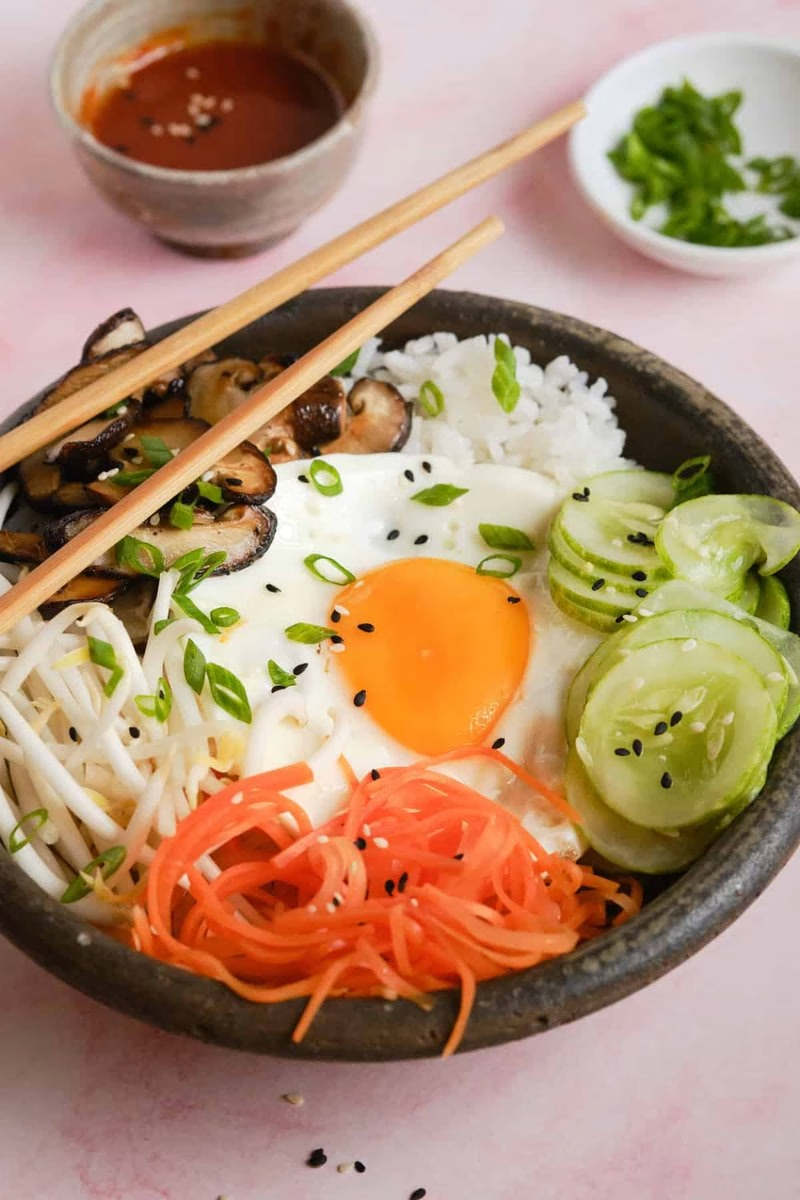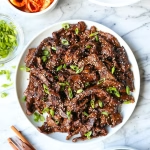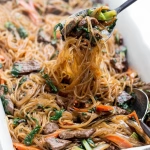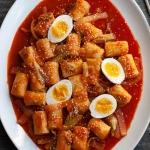
Bibimbap (Mixed Rice) is more than just a meal; it’s a vibrant experience that tantalizes the taste buds and warms the soul. Originating from Korea, this colorful rice bowl perfectly represents the harmony of flavors, textures, and colors that define Korean cuisine. With its mix of fresh vegetables, marinated meat, and a zingy gochujang sauce, Bibimbap is not only a feast for the eyes but also a beloved dish among food lovers worldwide.
In this article, you’ll learn how to prepare a mouthwatering Bibimbap (Mixed Rice) at home, explore its versatile ingredients, and discover variations that can cater to different dietary needs. So grab your apron, and let’s dive into the world of Bibimbap (Mixed Rice) ingredients, variations, and that oh-so-unique way to enjoy this traditional dish.
Ingredients
| Ingredient | Measurement | Description |
|---|---|---|
| Cooked Rice | 2 cups | Short-grain rice is preferred for its stickiness, making it ideal for mixing. |
| Spinach | 1 cup | Fresh spinach adds a vibrant green color and essential nutrients to your Bibimbap. |
| Carrots | 1 medium, julienned | Sweet and crunchy carrots bring both texture and color to the dish. |
| Zucchini | 1 medium, julienned | Soft and tender zucchini complements the other vegetables perfectly. |
| Mushrooms | 1 cup, sliced | Sautéed mushrooms impart an earthy flavor that enhances the overall taste. |
| Egg | 1 | A runny egg on top adds richness and creaminess to the dish. |
| Beef (or Tofu for a vegan option) | 200 grams, marinated | Marinated beef is classic, but feel free to swap it with tofu for a delicious vegan Bibimbap (Mixed Rice). |
| Gochujang (Korean chili paste) | 2 tablespoons | This spicy and slightly sweet sauce is essential for authentic flavor. |
| Sesame Oil | 1 tablespoon | A few drops bring a nutty aroma that ties all the flavors together. |
Step-by-Step Instructions
- Step 1: Prepare the Ingredients – Start by washing and chopping all the fresh vegetables. Marinate the beef in soy sauce, sugar, garlic, and sesame oil for at least 30 minutes to infuse it with flavor. If you’re making a vegan version, marinate the tofu cubes similarly to enhance the taste.
- Step 2: Cook the Vegetables – In a skillet, heat some sesame oil over medium heat. Sauté the spinach until wilted, about 2-3 minutes. Do the same for the carrots, zucchini, and mushrooms, taking care to season each vegetable with a pinch of salt to retain its flavor.
- Step 3: Cook the Meat or Tofu – In the same skillet, add the marinated beef or tofu and cook until fully done. This should take about 5-7 minutes for the beef, while the tofu may need about 10 minutes for a crispy texture.
- Step 4: Prepare the Egg – In a small separate pan, fry an egg sunny-side up. The runny yolk will add richness to your Bibimbap (Mixed Rice) when mixed in later.
- Step 5: Assemble the Bibimbap – In a bowl, place a serving of cooked rice as a base. Artistically arrange the sautéed vegetables, meat or tofu, and the fried egg on top. Drizzle some gochujang and sesame oil over the bowl. For extra flavor, you can also sprinkle sesame seeds.
- Step 6: Serve and Enjoy – Serve your Bibimbap (Mixed Rice) hot, and mix all the ingredients together before enjoying! This dish is best enjoyed with a side of kimchi for an authentic experience.
Pro Tips
- Customize Your Bibimbap: Feel free to experiment with different vegetables based on what’s fresh and in season. Bell peppers, bean sprouts, or even sweet potatoes work great!
- Make It Spicy: If you’re a fan of heat, add extra gochujang to your bowl or mix in some chopped chili peppers.
- Add Proteins: Other than beef or tofu, try chicken or seafood for a different take on this classic dish.
- Use a Hot Stone Bowl: If available, serve your Bibimbap in a stone hot bowl to create a crispy rice layer at the bottom for an intriguing texture.
Nutritional Information
| Nutrient | Per Serving |
|---|---|
| Calories | 540 |
| Protein | 25g |
| Carbohydrates | 75g |
| Saturated Fat | 2g |
| Fiber | 4g |
| Cholesterol | 140mg |
| Sugars | 5g |
| Fat | 15g |
FAQs
What is the best way to store Bibimbap (Mixed Rice)?
To store leftovers, let the Bibimbap cool completely, then transfer it to an airtight container. Refrigerate for up to three days. For the best texture, it’s advisable to store each component separately.
Can Bibimbap (Mixed Rice) be made vegan or gluten-free?
Absolutely! For vegan Bibimbap, simply replace beef with tofu or tempeh, and use gluten-free soy sauce to avoid gluten. The dish is quite adaptable.
What are the best side dishes to serve with Bibimbap (Mixed Rice)?
Kimchi is a classic side dish that pairs perfectly with Bibimbap. Other options include pickled vegetables, a light cucumber salad, or even a hot soup.
How long does it take to prepare Bibimbap (Mixed Rice)?
Preparation and cooking time is around 30 to 45 minutes, depending on your chopping speed and familiarity with the cooking process. It’s worth every minute!
Can I freeze Bibimbap (Mixed Rice) for later?
While it’s best fresh, you can freeze the cooked rice and vegetables separately for up to a month. Just make sure to reheat them on the stovetop for the best taste!
Bibimbap (Mixed Rice) is truly a celebration of flavors and textures. As you mix together the vibrant ingredients, you’ll find that every bite is more delicious than the last. Trying this recipe at home not only brings the taste of Korea to your kitchen but also allows you to customize it to your liking. So gather your ingredients, follow the steps, and get ready to enjoy a delicious and wholesome meal.
Tried this Bibimbap (Mixed Rice) recipe? Let us know your experience in the comments!






